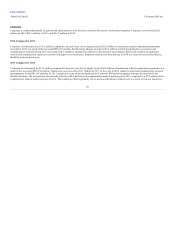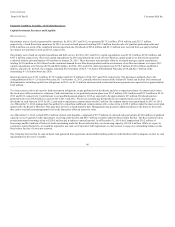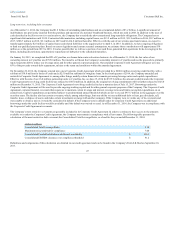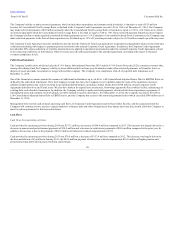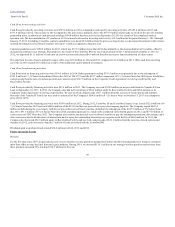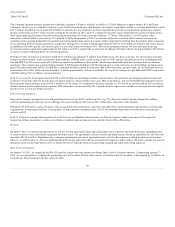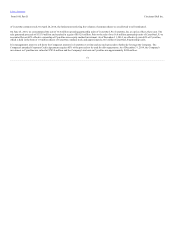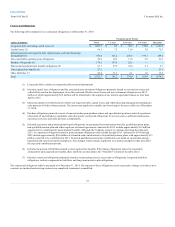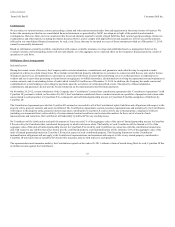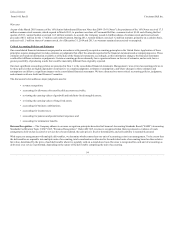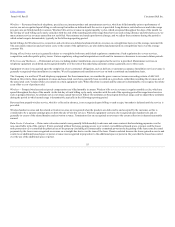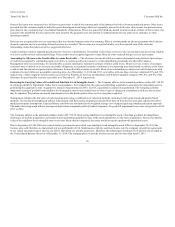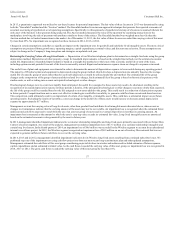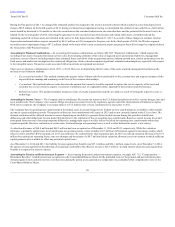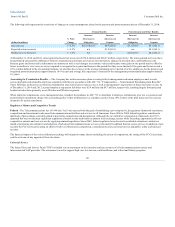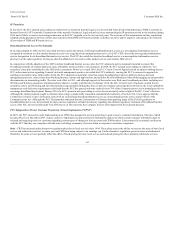Cincinnati Bell 2014 Annual Report Download - page 54
Download and view the complete annual report
Please find page 54 of the 2014 Cincinnati Bell annual report below. You can navigate through the pages in the report by either clicking on the pages listed below, or by using the keyword search tool below to find specific information within the annual report.
Table of Contents
Form 10-K Part II
Cincinnati Bell Inc.
Warrants
As part of the March 2003 issuance of the 16% Senior Subordinated Discount Notes due 2009 ("16% Notes"), the purchasers of the 16% Notes received 17.5
million common stock warrants, which expired in March 2013, to purchase one share of Cincinnati Bell Inc. common stock at $3.00 each. During the first
quarter of 2013, warrant holders exercised 14.3 million warrants. As a result, the Company issued 4.4 million shares of common stock and received cash
proceeds of $5.1 million for the 1.7 million cash settled warrants. During 2012, warrant holders exercised 3.2 million warrants, primarily on a cashless basis,
and received 1.5 million shares of common stock. As of December 31, 2014 and 2013, no warrants remained unexercised or unexpired.
Our consolidated financial statements are prepared in accordance with generally accepted accounting principles in the United States. Application of these
principles requires management to make estimates or judgments that affect the amounts reported in the financial statements and accompanying notes. These
estimates are based on information available as of the date of the financial statements; accordingly, as this information changes, the financial statements
could reflect different estimates or judgments. Certain accounting policies inherently have a greater reliance on the use of estimates, and as such, have a
greater possibility of producing results that could be materially different than originally reported.
Our most significant accounting policies are presented in Note 1 to the consolidated financial statements. Management views critical accounting policies to
be those policies that are highly dependent on subjective or complex judgments, estimates or assumptions, and where changes in those estimates and
assumptions could have a significant impact on the consolidated financial statements. We have discussed our most critical accounting policies, judgments,
and estimates with our Audit and Finance Committee.
The discussion below addresses major judgments used in:
•
revenue recognition;
•
accounting for allowances for uncollectible accounts receivable;
•
reviewing the carrying values of goodwill and indefinite-lived intangible assets;
•
reviewing the carrying values of long-lived assets;
•
accounting for business combinations;
•
accounting for income taxes;
•
accounting for pension and postretirement expenses; and
•
accounting for termination benefits.
The Company adheres to revenue recognition principles described in Financial Accounting Standards Board (“FASB”) Accounting
Standards Codification Topic ("ASC") 605, "Revenue Recognition". Under ASC 605, revenue is recognized when there is persuasive evidence of a sale
arrangement, delivery has occurred or services have been rendered, the sales price is fixed or determinable, and collectability is reasonably assured.
With respect to arrangements with multiple deliverables, we determine whether more than one unit of accounting exists in an arrangement. To the extent that
the deliverables are separable into multiple units of accounting, total consideration is allocated to the individual units of accounting based on their relative
fair value, determined by the price of each deliverable when it is regularly sold on a stand-alone basis. Revenue is recognized for each unit of accounting as
delivered, or as service is performed, depending on the nature of the deliverable comprising the unit of accounting.
54



